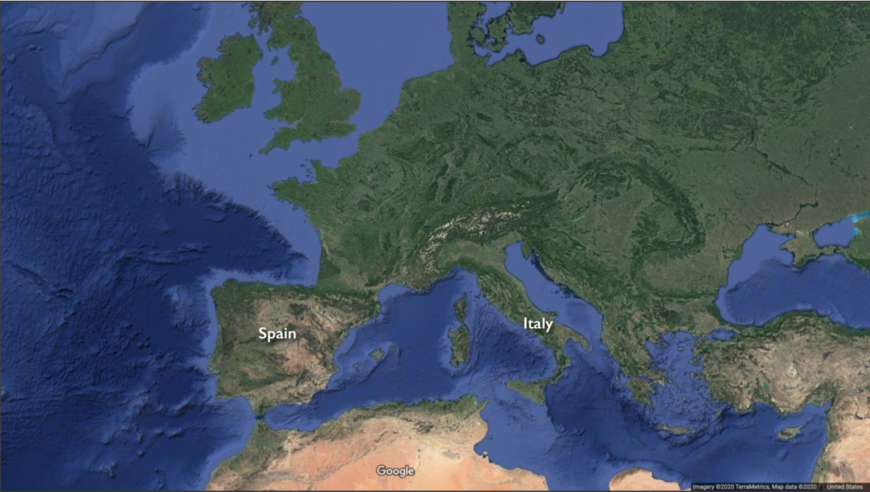Alonso Berruguete, Apostle or Saint, c. 1520s, polychrome and gilded walnut, 103 x 37 cm (The Metropolitan Museum of Art), part of Smarthistory’s Expanded Renaissance Initiative
Introduction
Alonso Berruguete was one of the most important artists of renaissance Spain, excelling at painting and sculpture among other things. Today he is well-known for his sculptures, which testify to his remarkable ability to carve marble, alabaster, or wood. This sculpture is polychromed (painted) wood.
As a young artist he traveled to Italy in 1504, where he came into contact with Michelangelo and engaged with his art while in Rome. He spent most of his time in Florence, painting in the mannerist style (Mannerism is a late renaissance style). After his return to Spain in 1518, he was made the king’s court artist, but primarily turned to sculpture for the remainder of his life. He and his workshop made elaborate retablos (altarpieces), which often took up the entirety of the apse of a church and required carpenters, gilders, painters, and sculptors to create such towering and impressive religious artworks.
While we do not know exactly who is depicted in this sculpture of the saint at The Metropolitan Museum of art, it offers a powerful example of Berruguete’s mannerist tendencies, his skill at carving in wood, and his work on religious retablos. It is most likely a sculpture that once rested on the corner of a retablo, indicated by the uncarved and unpainted back.
Berruguete’s life as an artist also reminds us of the mobility of artists in the sixteenth century. They moved around — to train, to study, and to find work. Today we tend to associate artists with a specific region or modern-day nation, but in the sixteenth century (and earlier) artists were often on the move.
Terms and key ideas
- Renaissance Spanish art
- Polychromed wooden sculpture
- Artists on the move
- Mannerist sculpture
Test yourself with a quiz!
Berruguete, Apostle or saint
Additional resources:
This sculpture at The Met
Learn more about the expanding the renaissance initiative
Learn more about making a Spanish polychrome sculpture
Read more about the medieval and renaissance altarpiece
Read more about mannerism
See one of Berruguete’s paintings at the Uffizi Gallery in Florence
Watch a video made by the National Gallery of Art about Berruguete
Read about the process of creating one of Berruguete’s retablos
C. D. Dickerson III, Mark P. McDonald, eds., Alonso Berruguete: First Sculptor of Renaissance Spain, exh. cat. (New Haven: Yale University Press, 2019)
For the classroom
Take notes while watching the video, using the Berruguete Active Video Note-Taking
Discussion questions
- Compare Berruguete’s sculpture with Juan Martínez Montañés and Francisco Pacheco’s Christ of Clemency. What does this comparison tell us about polychromed wood sculpture in Spain?
- Compare Berruguete’s sculpture with Giambologna’s Abduction of a Sabine Woman. How are they both mannerist? In what ways do they differ?
- Consider the role of Berruguete’s sculpture as a cultural artifact. Without being able to identify the specific identification of the sculpted figure, what other methods can we use to understand the sculpture’s role in renaissance Spain? Is something lost by not being able to identify the specific individual?
Smarthistory images for teaching and learning:
[flickr_tags user_id=”82032880@N00″ tags=”berrugueteap,”]


